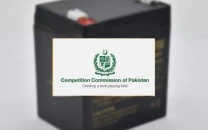S&P keeps outlook stable for Pakistan
Ratings agency sees country’s economy progressing, implementation of economic reforms

S&P Global Ratings sees Pakistan’s progressing economy emerging from pre-Covid-19 and pandemic shocks and posted confidence that the government would continue to implement economic reforms agreed with the International Monetary Fund (IMF) under its $6 billion loan programme.
The American ratings agency estimated Pakistan’s requirement for foreign financing would stand fully covered for the next 12 months with inflows coming from multilateral and bilateral credit partners. More importantly, the amount of ‘usable’ foreign currency reserves rose to $14 billion at present compared to $2.4 billion two years ago in 2019.
Accordingly, it affirmed its ‘B-’ long-term and ‘B’ short-term sovereign credit ratings with stable outlook on Pakistan on Monday.
The global rating agency, however, said the country’s fiscal and external vulnerabilities (debts) remained elevated and expected it would continue to roll over the commercial credit lines, going forward.
“Pakistan’s economy is gradually recovering from its pre-pandemic nadir and the subsequent Covid-19 shock,” S&P Global Ratings said in its ratings issuance titled ‘Pakistan ‘B-/B’ Ratings Affirmed; Outlook Stable’.
Following a pause at the outset of the pandemic in 2020, Pakistan has made further progress toward implementing economic and fiscal reforms under its Extended Fund Facility (EFF) program with the IMF.
“As of April 2021, the government had completed most of the 12 structural benchmarks expected under the programme up to that point. The IMF subsequently completed its second through fifth reviews under the EFF. In particular, Pakistan has made solid progress toward containing its twin current account and primary fiscal deficits, has begun to rebuild its foreign exchange reserves alongside a more flexible rupee exchange rate regime, and consolidated the State Bank of Pakistan (SBP)’s autonomy by implementing zero lending from the central bank.
Ongoing reform efforts should support a continued stabilisation of Pakistan’s fiscal and external metrics, though vulnerabilities remain elevated. “Multilateral and official funding will remain critical to Pakistan’s external debt sustainability.”
Read More: PTI govt put economy on right track: minister
The agency reports, “The stable outlook reflects our expectations that funding from key bilateral and multilateral partners, along with the recent improvement in Pakistan’s balance-of-payments position, will be sufficient for the country to meet its considerable external obligations over the next 12 months.”
The stable outlook (also) reflects expectations that continued recovery will help stabilise the fiscal and debt metrics…and that the country will continue to roll over its commercial credit lines.
“We expect Pakistan’s recent improvement in growth momentum to endure, bringing its long-term performance more in line with global peers,” the rating agency said under the headline ‘Institutional and economic profile: Economic recovery on increasingly solid footing despite lingering pandemic risks’.
Pakistan’s real GDP expanded more than expected, at 3.9% in fiscal 2021 (ended June 2021), as activity began to normalise following a pandemic-driven 0.5% contraction in fiscal 2020. Following the country’s stabilisation in fiscal 2021, “we forecast a further acceleration to 4.1% on balanced private consumption and investment growth in fiscal 2022”.
The government’s more calibrated and targeted approach to Covid-19 containment measures contrasts with the stricter lockdown implemented in the fourth quarter (Apr-Jun) of fiscal 2020, supporting the resumption of economic activity.
“We forecast GDP per capita to rise toward $1,600 by fiscal 2024. We expect Pakistan’s current account deficit to rise as oil prices increase and import demand recovers from fiscal 2022 onward. Nevertheless, we do not see the deficit rising toward its 2018 level, and instead forecast that it will remain modestly below 3% of GDP.”
Pakistan’s usable reserves have improved considerably over the past three years, rising from a low of just $2.4 billion in fiscal 2019 to around $14 billion as of June 2021.
“We expect inflation to gradually decline from 2020 toward its long-term trend of about 6%.”
Published in The Express Tribune, August 31st, 2021.
Like Business on Facebook, follow @TribuneBiz on Twitter to stay informed and join in the conversation.



















COMMENTS
Comments are moderated and generally will be posted if they are on-topic and not abusive.
For more information, please see our Comments FAQ